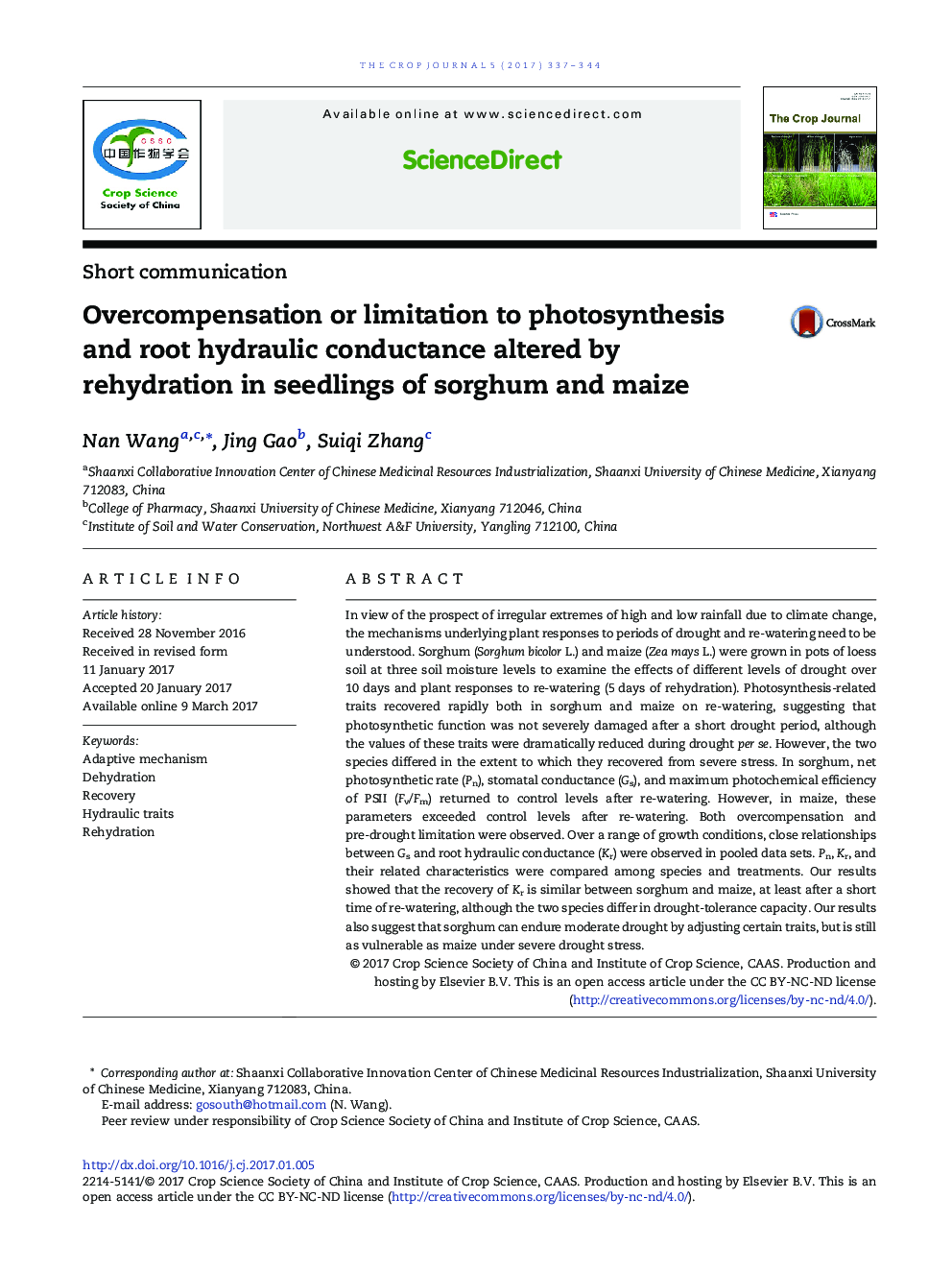| Article ID | Journal | Published Year | Pages | File Type |
|---|---|---|---|---|
| 5520835 | The Crop Journal | 2017 | 8 Pages |
In view of the prospect of irregular extremes of high and low rainfall due to climate change, the mechanisms underlying plant responses to periods of drought and re-watering need to be understood. Sorghum (Sorghum bicolor L.) and maize (Zea mays L.) were grown in pots of loess soil at three soil moisture levels to examine the effects of different levels of drought over 10Â days and plant responses to re-watering (5Â days of rehydration). Photosynthesis-related traits recovered rapidly both in sorghum and maize on re-watering, suggesting that photosynthetic function was not severely damaged after a short drought period, although the values of these traits were dramatically reduced during drought per se. However, the two species differed in the extent to which they recovered from severe stress. In sorghum, net photosynthetic rate (Pn), stomatal conductance (Gs), and maximum photochemical efficiency of PSII (Fv/Fm) returned to control levels after re-watering. However, in maize, these parameters exceeded control levels after re-watering. Both overcompensation and pre-drought limitation were observed. Over a range of growth conditions, close relationships between Gs and root hydraulic conductance (Kr) were observed in pooled data sets. Pn, Kr, and their related characteristics were compared among species and treatments. Our results showed that the recovery of Kr is similar between sorghum and maize, at least after a short time of re-watering, although the two species differ in drought-tolerance capacity. Our results also suggest that sorghum can endure moderate drought by adjusting certain traits, but is still as vulnerable as maize under severe drought stress.
